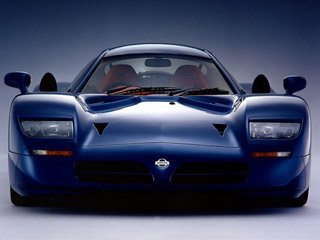Japan's automakers have produced some awesome sportscars over the years. The Toyota Supra, Nissan Z, Mazda RX-7 and even today's Scion FR-S and Subaru BRZ come to mind. But supercars? Now that's another matter entirely. Although the island nation's carmakers account for some of the largest and most successful in the industry, Japan has made surprisingly few true supercars. We're talking about the kind of physics-defying extreme exotics that typically come from European automakers. But there have been a few.
Possibly the most obvious choice is the Nissan GT-R. Although it's often called a "supercar killer" (due to its relatively lower price compared to Japanese supercars), its performance, rarity and cost of ownership put it right in supercar territory itself. Previously existing as a version of the Skyline, Nissan separated the GT-R into its own model in 2007, and has steadily upgraded the GT-R ever since. What launched with 480 horsepower now produces 545 hp from its 3.8-liter twin-turbo V6, driving through a six-speed dual-clutch transmission to all four wheels to reach sixty in less than three seconds and a top speed in excess of 305 km/h.


One of the most exotic automobiles ever produced by a mainstream Japanese automaker was the Acura NSX. Honda aped the format of some of Europe's finest in developing the NSX, giving it a mid-engine, rear-drive layout and styling that made it look like it had come from Italy's "supercar valley". Sure, it only had a 3.0-liter V6 engine with around 280 hp, but the NSX's chassis was second to none thanks in part to Ayrton Senna's input. Production stretched from 1990 to 2005. Honda planned on building a front-engined successor that was ultimately relegated to racing, but a new hybrid NSX is due to arrive within the next few years.


The crown, however, arguably belongs to Toyota and its one true supercar, the Lexus LFA. With a 4.8-liter V10 and more aggressive styling than a punk's hair-do, the LFA belongs firmly in supercar territory like no Japanese car has before. Of course the $375,000 price tag also helps secure its exotic status. Built largely out of carbon fiber and with 552 horsepower on tap, the LFA hustles to 100 in 3.6 seconds and reaches a 325 km/h top speed, making it one of the most capable performance machines ever to roll out onto the street from a Japanese factory. Production of all 500 units has now reached its end, but rumors of a roadster version are also afoot.


While we generally try to avoid putting more than one product from a single manufacturer on these Top 5 lists, Nissan earned its place not only with the GT-R, but also with the lesser-known R390. Nissan designed the R390 to compete at Le Mans in the GT1 category in the late 1990s, but homologation requirements led the Japanese automaker to build just two road-going examples, with one residing in Nissan's own archives. Its 3.5-liter twin-turbo V8 sits amidships like a supercar's engine ought to, producing 550 horsepower to propel the R390 street car from 0-100 km/h in just 3.8 seconds and on to a 315 km/h top speed.


The last Japanese supercar on our list is one you may very well never have heard of, unless you saw James May get behind the wheel of one when Top Gear visited Japan. It's called the Mitsuoka Orochi, and it's about as obscure as they come. Initially unveiled in concept form in 2001, Mitsuoka began producing the Orochi in limited numbers in 2006. It packs a 3.3-liter Toyota V6 with just 230 horsepower and mated to a five-speed automatic, leaving its supercar standing in question. But its rarity, price tag and mid-engine layout place it firmly in exotic territory. The Orochi's styling is not for everyone, but then with a price of about 10 million yen (~$100k), few could afford one, anyway.





